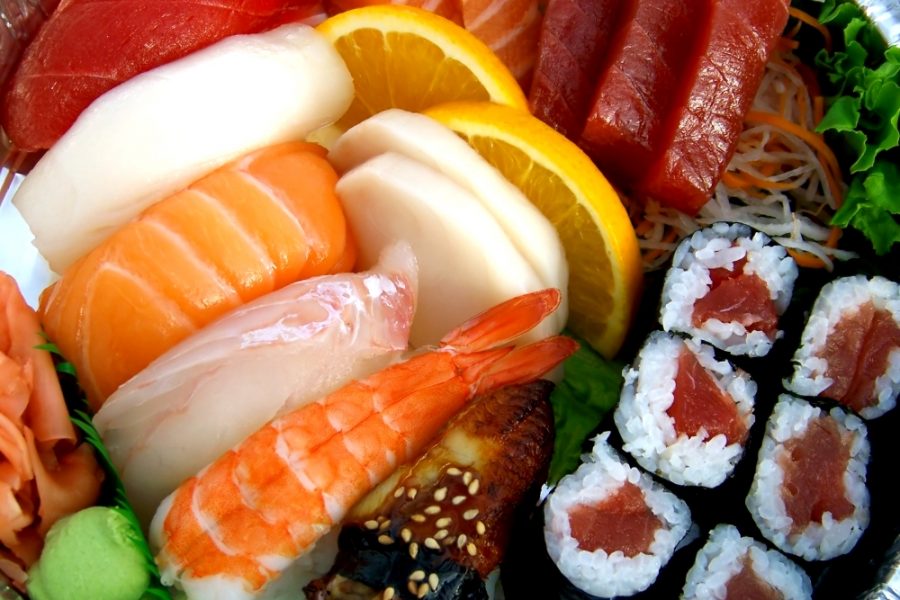Portuguese doctors have reported one of many cases of “anisakiasis,” a parasitic infection now associated with patients who eat raw or undercooked sushi.
The infection occurs when a person eats raw meat or fish that contains worm larvae. Although most cases of anisakiasis are reported in Japan, they have become increasingly common in Europe and the Americas due to sushi’s popularity as an exotic yet common dish.


Think twice before eating sushi at the Chinese buffet
In March, Dr. Joanna Carmo from the Centro Hospitalar de Lisboa Ocidental, Portugal, reported on the case of a 32-year-old man who was admitted to the hospital as he suffered from intense pain in his belly, paired with vomiting and fever.
Doctors examined the man and saw that his belly was unusually soft, so he was directed to take lab tests to analyze his intestinal area. Results showed that he had a mild leucocytosis, which is an abnormal increase in the number of white cells, an indicator of some sort of infection. Shortly thereafter, the man confirmed that he had eaten sushi not too long ago.


It appeared to be the result of nematode parasites developing into anisakiasis, an infection whose cause is widely known to be the ingestion of raw or contaminated seafood. Its symptoms include abdominal pain, internal bleeding, nausea, vomiting, perforation of the gastrointestinal tract, and bowel obstruction.
After identifying the parasite, doctors removed it by using a Roth Net. Roth Net devices are designed for endoscopic use to remove foreign objects that may be otherwise impossible to manipulate without surgery.
Although anisakiasis is seen as a rare disease, the truth is that its incidence may be higher than it is initially reported, as many cases go undiagnosed. The parasitic infection may also pose as other diseases, leading to unnecessary surgery, which is why patients and clinicians alike should be aware of this condition before taking any rash measures.
How anisakiasis infection occurs and how to prevent it
The most common variety of the disease is characterized by the patient being host to the nematode Anisakis simplex, as only a few reports exist concerning infection due to other marine organisms. On that same note, marine mammals such as seals, dolphins, walruses, and whales are natural hosts of the anisakis.
The life of the anisakis begins when an adult specimen passes its eggs to another environment through the hosts’ feces. The eggs form embryos and the larvae start to form in just a few days. At this stage, they may be ingested by fish, squid, and crustaceans, when they can then be ingested by humans.
Another recent case occurred in Alberta, Canada, when a 50-year-old man started vomiting and having intense abdominal pain one hour after eating raw salmon. Doctors determined that it was anisakiasis. Treatment shortly followed, by having doctors remove the parasite through esophagogastroduodenoscopy (EGD).
The infection can be gastric, intestinal, or ectopic. 95 percent of cases are gastric, and the majority of remaining cases are intestinal anisakiasis.
To correctly diagnose the disease, the doctor must visualize the larva by using EGD, which is often latched onto the gastric body. Although other methods such as CT scanning and ultrasound may be useful to rule out other causes of pain, the best diagnostic procedure is still direct endoscopic visualization.
After the parasite is identified, it is removed by using forceps or other medical tools. It is important to make sure that no parts of the larva remain attached to the gastric wall. If it is not removed correctly, the disease may persist and cause chronic gastric inflammation.
Currently, there is no drug-based therapy to overcome the infection, as researchers have already tried a number of natural and artificial treatments to cure a patient with anisakiasis.
The most effective method of prevention is educating the public about the risk of eating raw fish in unsanitary conditions. Usually, the product can be inspected close enough to spot any parasitic body.
The Food and Drug Administration recommends freezing raw seafood to -35°C or below for 15 hours or to -20°C for 7 days to get rid of any parasites. Studies suggest that, if all of FDA’s guidelines are followed, all the larvae can be eliminated with no risk of infection.
The other way to avoid being infected with anisakiasis is to only eat cooked fish, as opposed to meals with raw fish and seafood.
Source: The British Medical Journal
